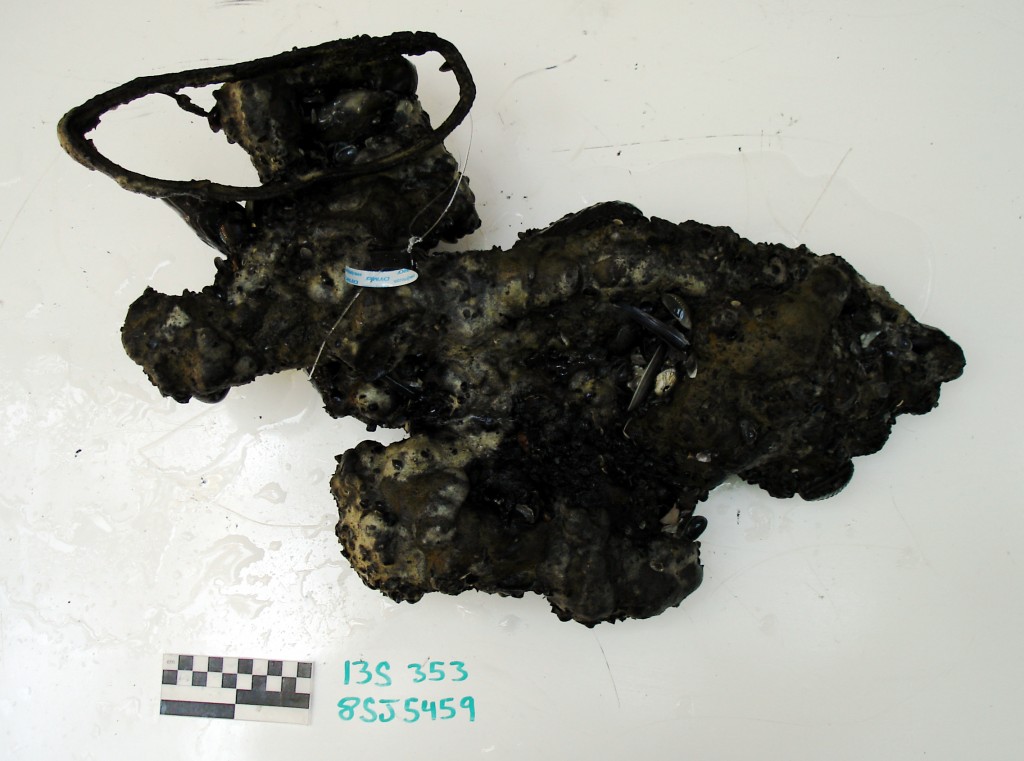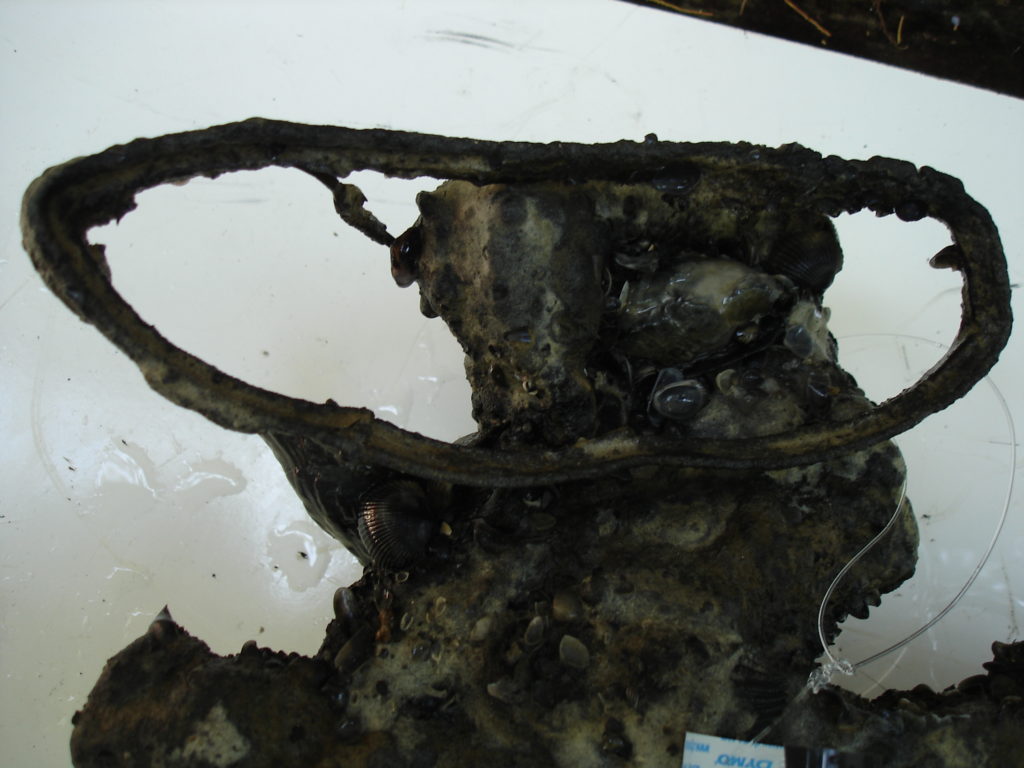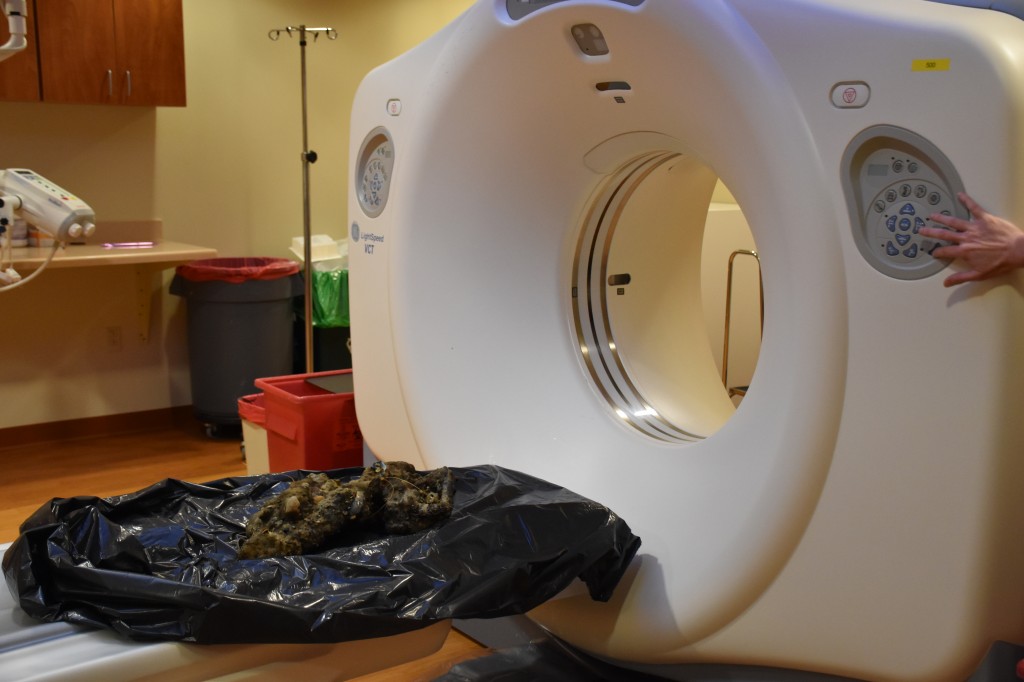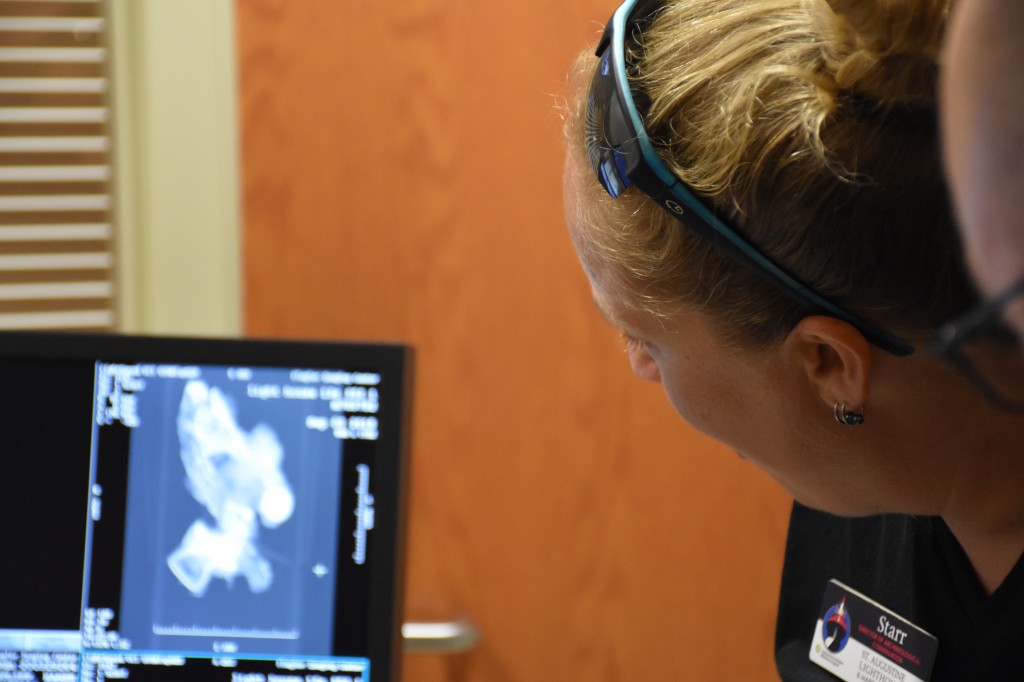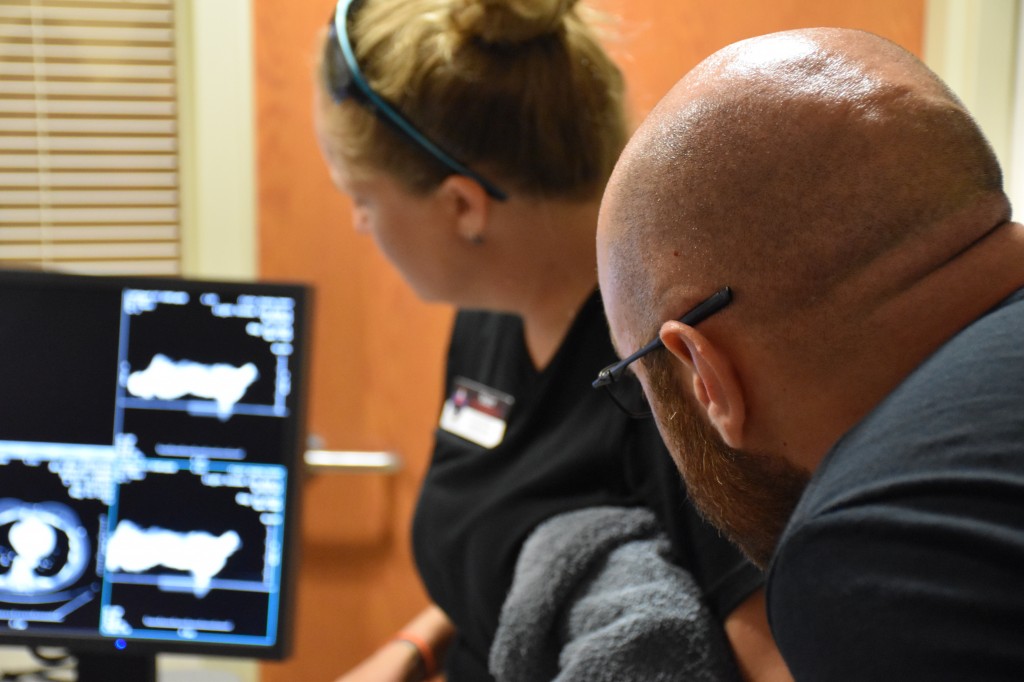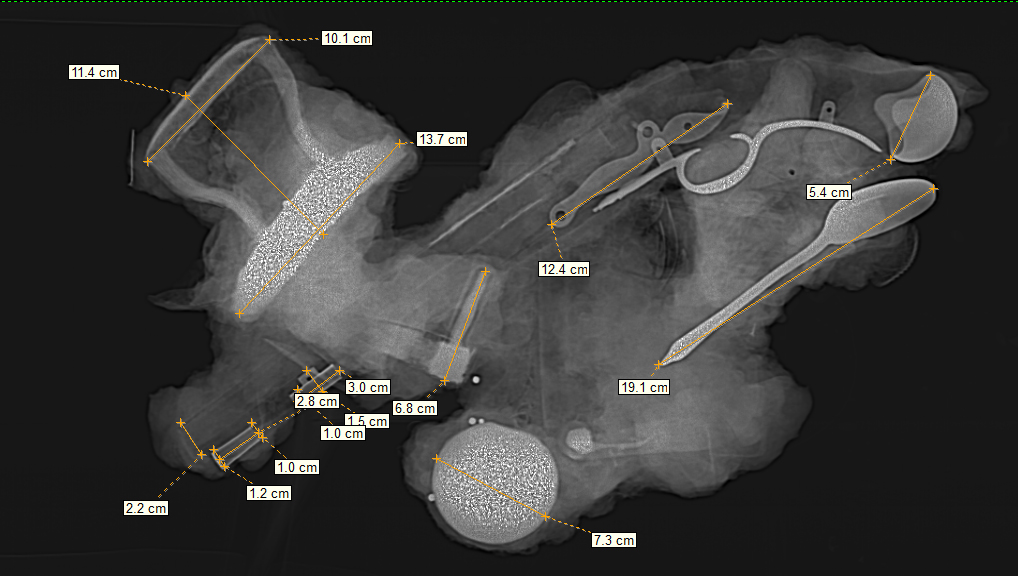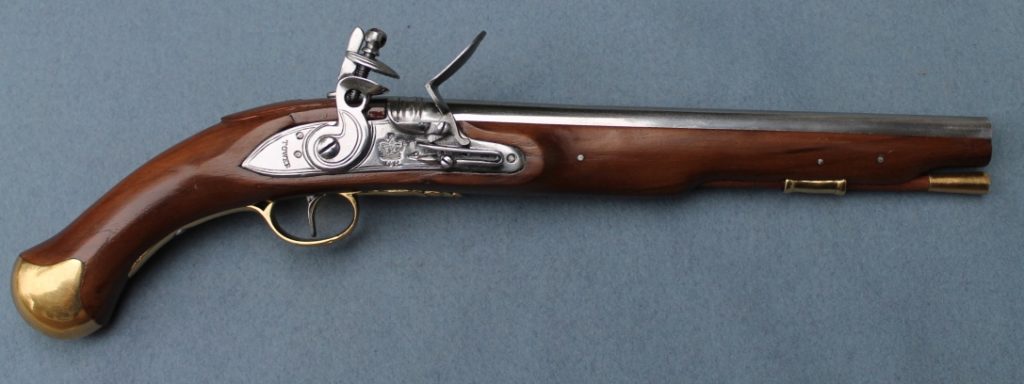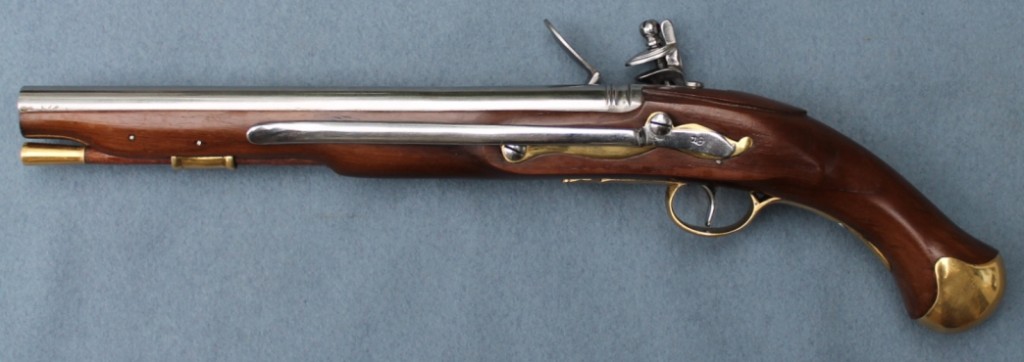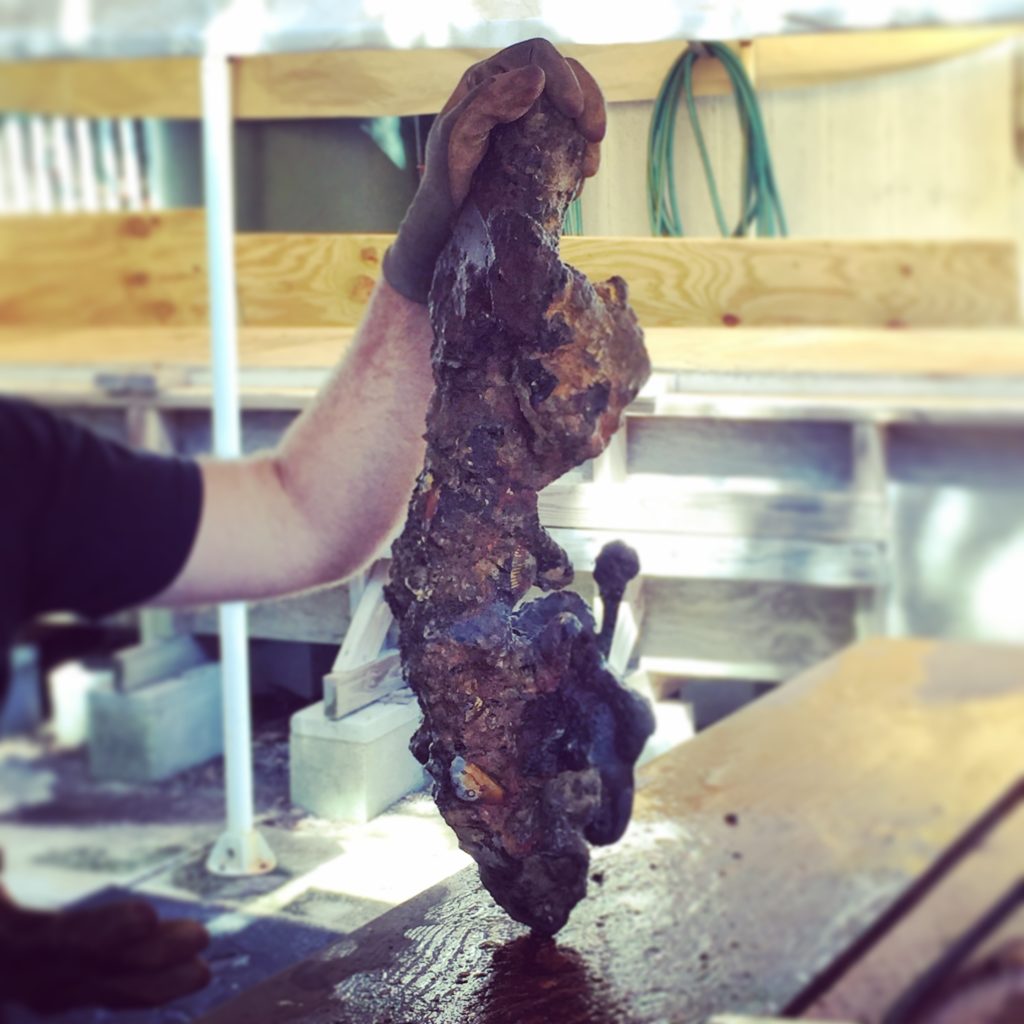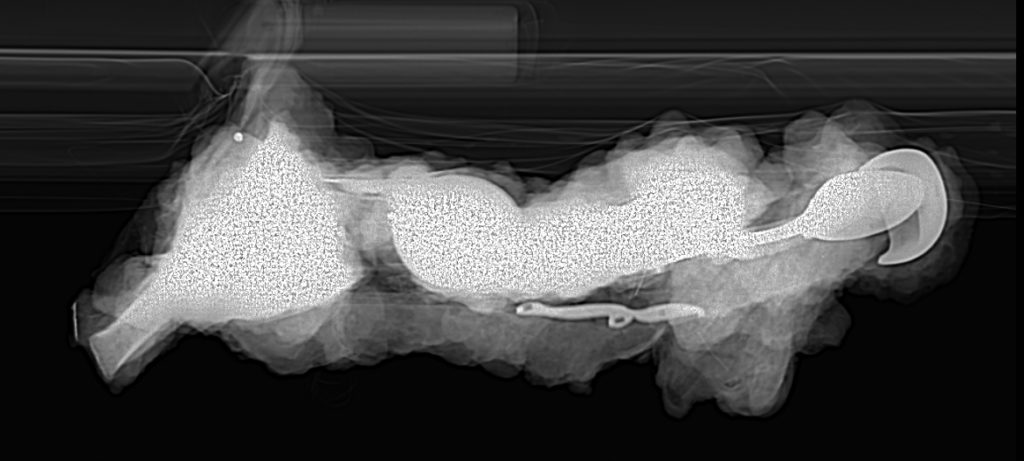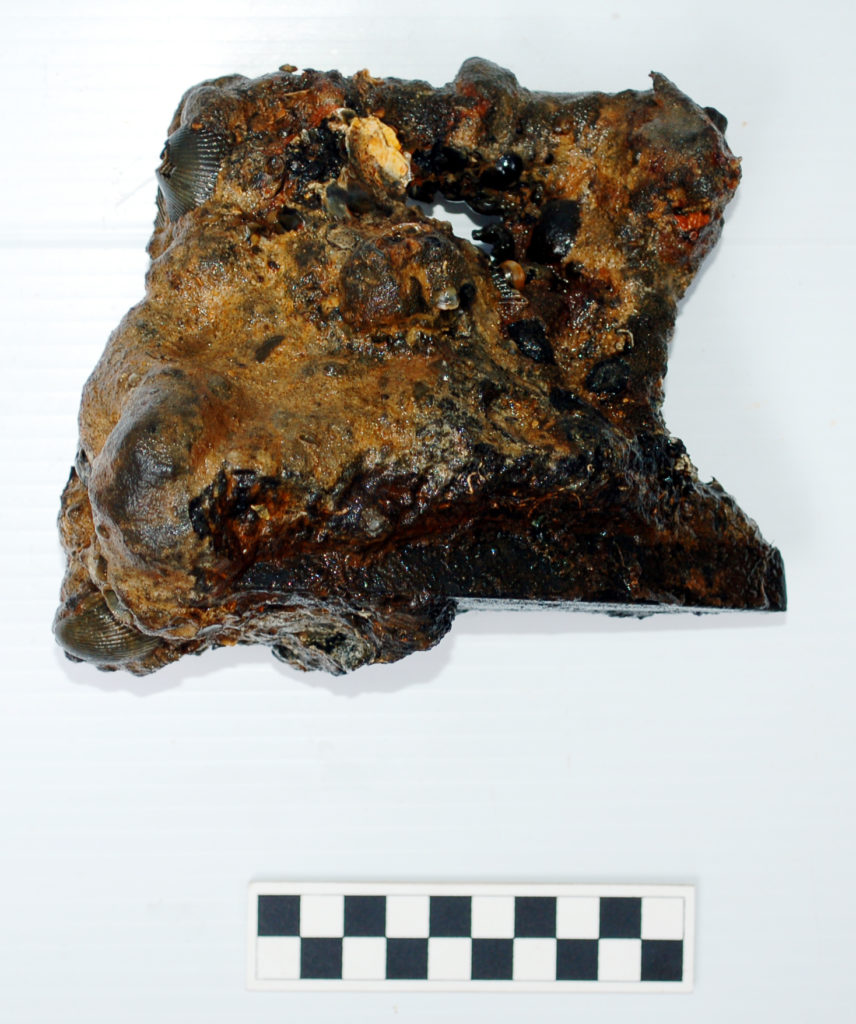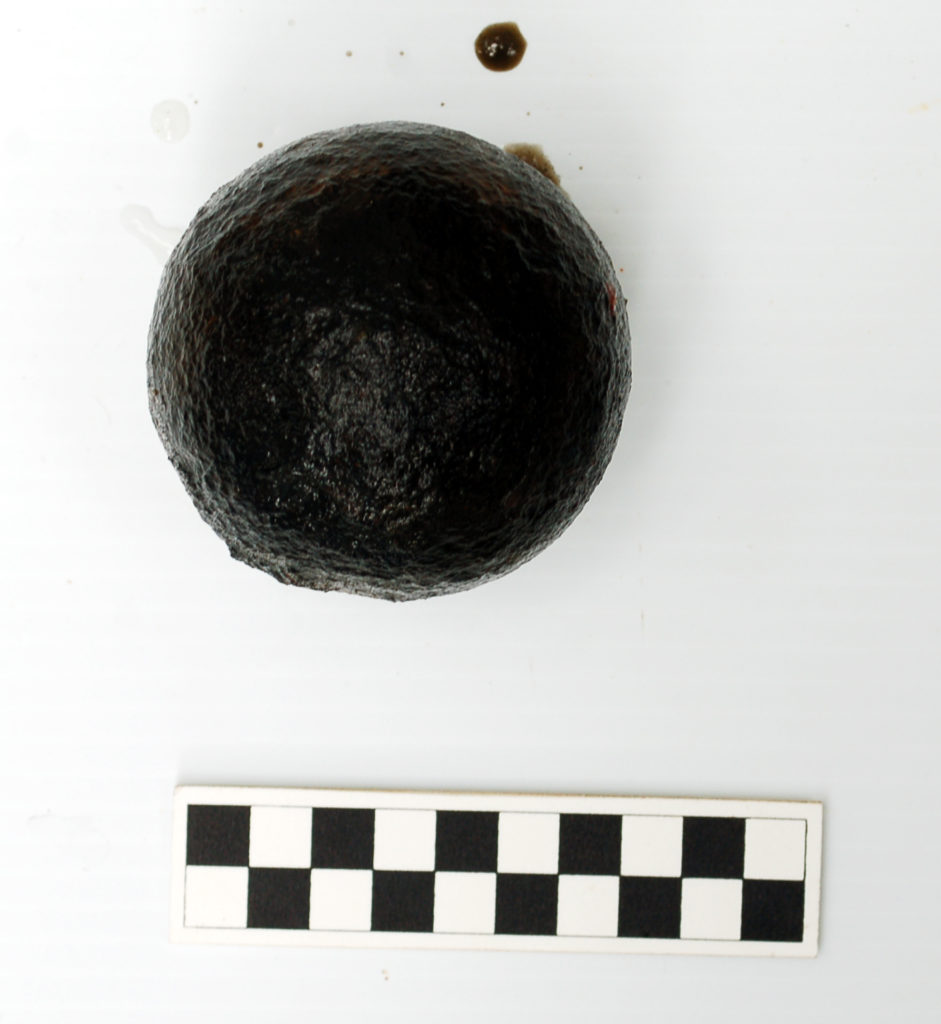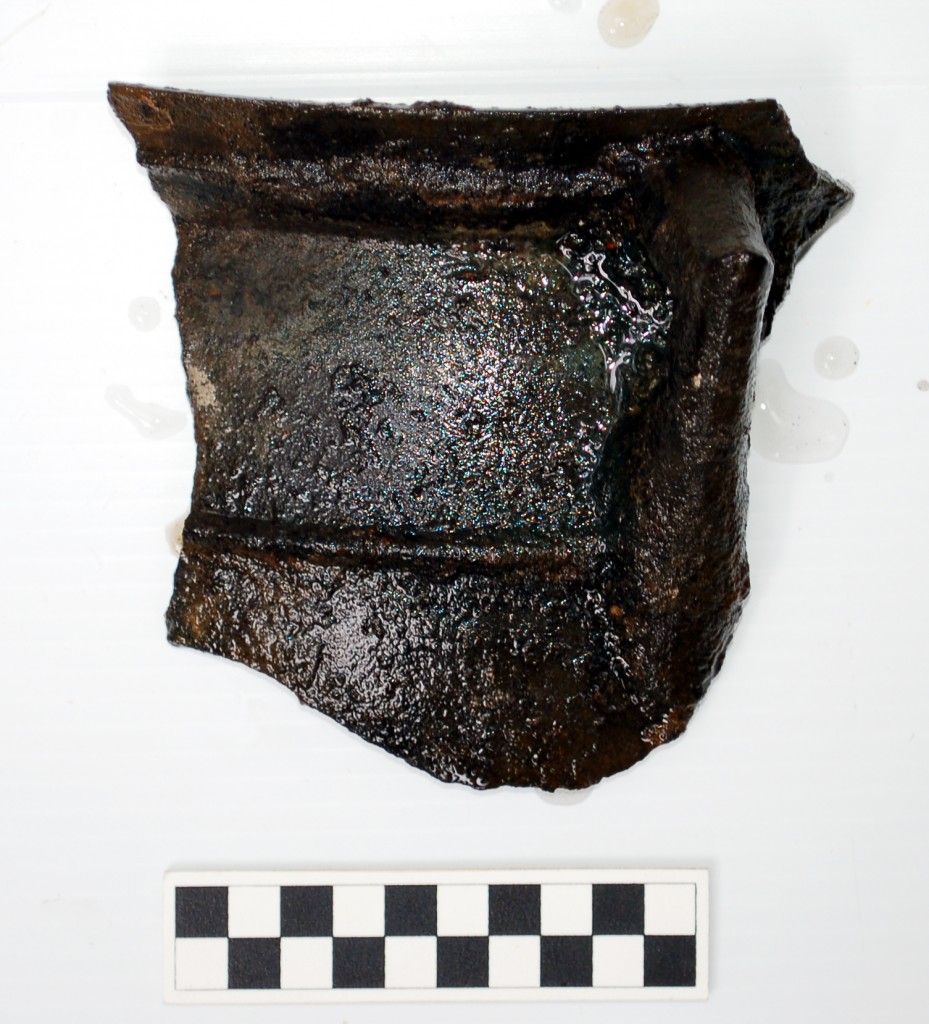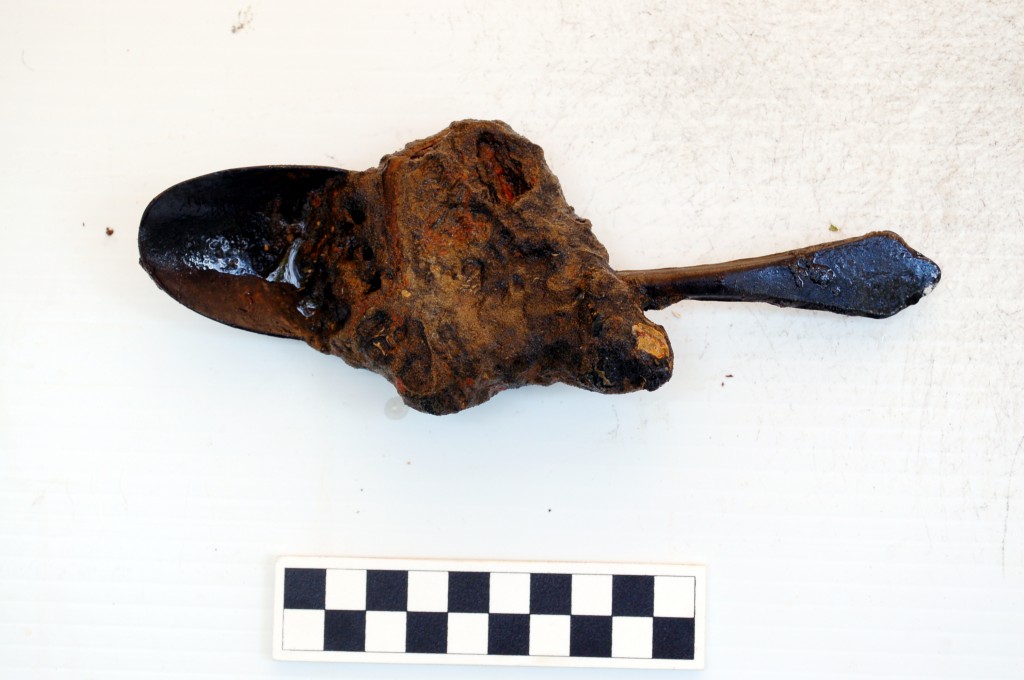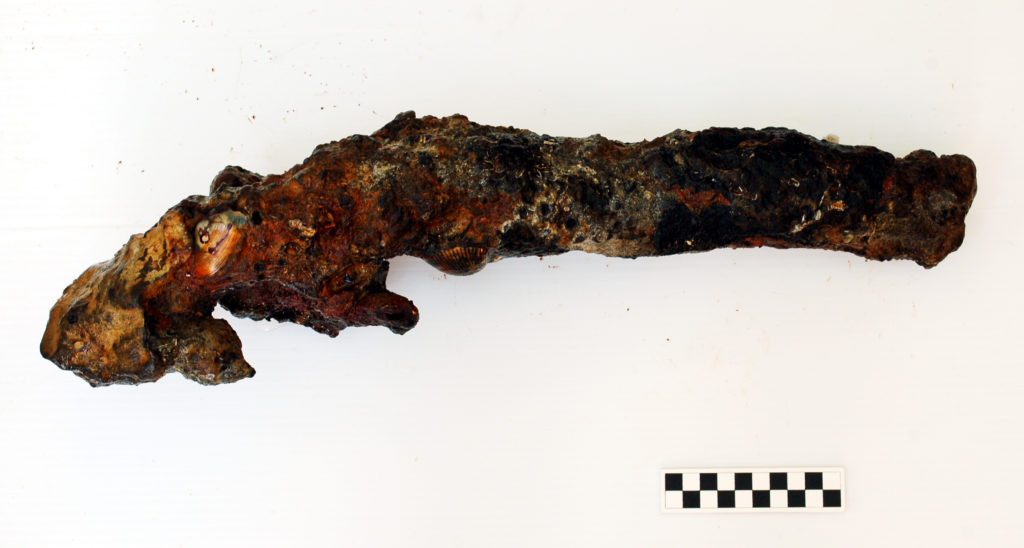In the previous blog, X-rays of smaller artifacts from the 2015 Storm wreck field season were discussed. The smaller objects are taken to Monahan Chiropractic Medical Clinic to determine what is inside.
The larger items, however, are brought to Flagler Hospital Imaging Center where they are able to accommodate the bigger and odder-shaped concretions. Nine such artifacts from several different field seasons and locations were recently taken to the Imaging Center to be X-rayed.
While there are some intriguing finds, one in particular stood out.
Concretion 13S 353.1 was excavated in the 2013 field season and had obvious unusual characteristics from the start. It appeared to be a conglomeration of at least three or four possible different artifacts, two of which were somewhat identifiable.
The large ring on the top of the concreted sediment turned out to be a cupreous ring. It is probably the remains of a copper or brass cauldron rim and the rest of the vessel corroded away. Soon after the concretion was excavated, but before it was X-rayed, the ring separated from the other objects and was put in storage separately.
Fast forward to 2015 and X-raying the large concretions in storage.
We took the objects to the Imaging Center and placed them one at a time in the CT-scan machine. While we have the option to do a full scan of the concretion with the segmented slices of the artifacts inside, it is not always the best idea. Metal, especially lead, will lead to bright, high-contrast reflections in the CT-scan images and are not usable. Instead, the machine will take simultaneous X-rays of a top-down and side view.
The top-down view is the first image to load and showed a number of artifacts in the concretion. There was a clothing iron, also known as a sad iron, a cannonball and a spoon that all were immediately recognizable. There were two sections of the X-ray that were not identifiable, but showed signs of some metal remains. The star of the attraction, though, was the large pistol that runs through the center of the concretion.
The gun appears to be a Royal Navy sea service model flintlock pistol. The buttcap, trigger guard and portions of the ramrod are all visible, appear in good condition and should be made of brass. The outline of the wooden stock and the iron bore are also discernible, but it is difficult to determine their current condition.
Unfortunately, it looks as though there are some missing pieces.
The hammer, frizzen, trigger and belt clip all seem to be absent. This could be for a number of reasons. One possibility is they could have all been knocked loose during the wreck or on the ocean floor. Another likelihood is because these pieces are made of iron, they have completely corroded away while underwater. If that is the case, the corrosion may have left voids which can be filled with epoxy resin. However, I do not want to begin air-scribing on the pistol without having a better idea of what remains.
In order to have a better understanding of the pistol remains, I have to remove the other artifacts and take new X-ray images. While the aerial view of the concretion shows all the different objects individually, the side-view shows a jumbled mess. The iron, cannonball and spoon all line up almost perfectly and obscure the pistol.
I began by separating the iron.
Next came the cannonball.
While air-scribing the cannonball, the shadowy section of the X-ray next to it became evident. It was a piece of a medium to large cast iron cauldron.
Finally, I removed the pewter spoon.
Now, with the other large artifacts separated, it is much easier to see the pistol definition.
With the pistol more isolated, we will be able to get a new X-ray with more definition of the piece and its missing parts so that air-scribing can begin. This is an exciting new find for our upcoming exhibit highlighting the story of this American Revolutionary War-era shipwreck.
Click here to read more about the artifacts being conserved for our the Wrecked Exhibit, scheduled to open in spring 2016!
Andrew Thomson is the Assistant Conservator for the St. Augustine Lighthouse & Maritime Museum. He received his graduate degree and training from the Conservation Research Laboratory at Texas A&M.


